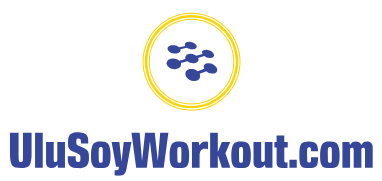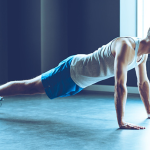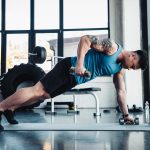Table of Contents
Why Recovery Matters in Football
Football players train hard week after week. Matches, drills, sprints, and weight sessions push the body. Recovery helps muscles repair, reduce fatigue, and prevent injuries. Without it, players risk hamstring strains, shin splints, and joint pain.
A 2023 NCAA study found that college athletes using proper recovery methods had 25 percent fewer non-contact injuries. That’s huge at all levels of play.
Compression footwear is one recovery tool players now swear by. But does it work beyond the hype?
What Is Compression Footwear?
Compression Boots and Recovery Slides
Compression footwear comes in two main forms:
- Compression recovery boots: tall sleeves that inflate around calves, thighs, and feet. Used after games or workouts.
- Compression recovery shoes or slides: lighter, everyday footwear made with compression zones and enhanced arch support.
Each type claims to improve blood flow and reduce swelling.
The Science Behind It
The theory is simple. Compression squeezes the limbs. That helps push blood back to the heart. The result: faster removal of waste like lactic acid, and better oxygen delivery for healing.
What Research Shows So Far
A 2024 study on high school football players found that those using compression boots for 30 minutes post-practice reported 40 percent less muscle soreness after 24 hours compared to players who sat still.
Another trial published in the Journal of Sports Science showed compression footwear reduced ankle swelling by 12 percent after intense drills.
Real Player Testimony
Marcus, a semi-pro linebacker, uses recovery boots after games.
“My legs feel lighter the next morning. Tightness goes down fast. I think I bounce back sooner for the next practice.”
He estimated the boots paid for themselves in two weeks of avoiding missed reps or training days.
Maria, a college midfielder in soccer, wears compression recovery slides between drills.
“They keep my ankles stable. No sharp pain, just gentle pressure. I recover faster after long sessions.”
Pros and Cons of Compression Footwear
Pros
- Easy and fast: Just slip on or zip boots and go.
- Portable: Recovery boots fold flat. Slides fit in a gym bag.
- Backed by some studies: Research shows real gains in soreness and swelling.
- Low-risk: No drugs, no needles.
Cons
- Cost: Compression boots run $249–$399. Slides cost $79–$129.
- Time: You need 20–40 minutes after each session.
- Effect varies: Benefits are not the same for everyone.
- No serious injuries: These tools help soreness, not torn ligaments or broken bones.
How to Use Compression Footwear Right
Use Boots After Hard Workouts and Games
Wear recovery boots for 30 minutes after full-contact sessions or long drills. You don’t need them after light jogs or easy training.
Wear Slides on Rest Days
Use slides between workouts. They help maintain circulation and reduce muscle tightness. Slip them on while studying, watching film, or driving.
Combine With Other Recovery Tools
Use compression with foam rolling, ice baths, stretching, or massage. Recovery works best as a team effort, not solo.
Track How Your Body Feels
Log your soreness, muscle tightness, and training capacity. Use a scale from 1 to 10. Track before and after using compression to see what’s working.
Best Products for Football Players
| Product | Type | Price (USD) | Notes |
| Normatec 3P | Boots | $399 | 20 min auto-cycle, Bluetooth app |
| Rapid Reboot R3 | Boots | $249 | Budget-friendly, manual dial control |
| Therabody Recovery Slides | Slides | $89 | Targeted arch and ankle support |
| CEP Recovery Slides | Slides | $79 | Graduated compression and gel footbed |
Each product is backed by athlete reviews and warranty coverage.
When Not to Use Compression
- Open wounds on legs or feet
- Circulation problems like deep vein thrombosis
- Severe swelling or pain—see a doctor first
If you feel numbness or pins and needles, stop and check with a medical professional.
Can Compression Footwear Prevent Injury?
Compression helps with recovery, which indirectly lowers injury risk. But it’s not a direct shield. Proper warm-up, strength work, nutrition, hydration, and load management remain the primary defenses.
Making the Investment Worthwhile
Prioritize Based on Position and Workload
Lineman and linebackers carry more muscle than wide receivers. They take heavier hits too. They get more benefit from compression. But all players with daily high-intensity training can gain from it.
Team Purchase Plans
If you play on a college or club team, split the cost. One pair of boots may serve two or three players per day on a schedule.
Test a Pair Before Committing
Buy compression slides first. They cost less. Try them for two weeks of training to see if they help you. If recovery improves, scale up to boots.
Final Thoughts
Compression footwear is not a miracle cure. But it’s a useful tool for muscle recovery, soreness relief, and quicker game readiness.
If you train hard and play frequently, recovery boots and slides are worth a place in your gear bag. Track your soreness, compare your training days, and invest where it helps.
Also protect your image offline and online. If past stories hurt your reputation, a firm like Reputation Flare can help remove news articles and clean up your presence. That gives you focus on recovery—and game day.
Train smart, recover better, and get back on the field stronger than before.







